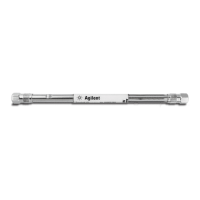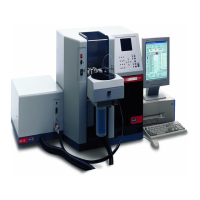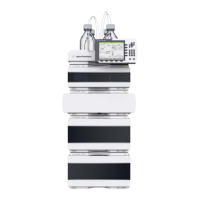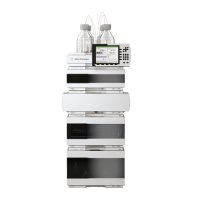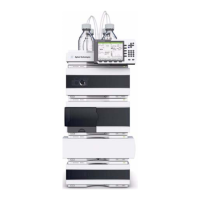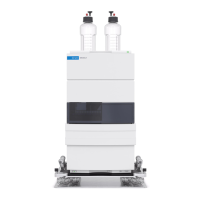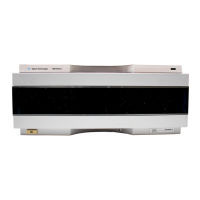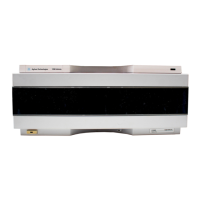Agilent 1200 Preparative Pump User Manual 55
Using the Preparative Pump
4
Algae Growth in HPLC Systems
Algae Growth in HPLC Systems
The presence of algae in HPLC systems can cause a variety of problems that
may be incorrectly diagnosed as instrument or application problems. Algae
grow in aqueous media, preferably in a pH range of 4-8. Their growth is
accelerated by buffers, for example phosphate or acetate. Since algae grow
through photosynthesis, light will also stimulate their growth. Even in distilled
water small-sized algae grow after some time.
Instrumental Problems Associated With Algae
Algae deposit and grow everywhere within the HPLC system causing:
• Deposits on ball valves, inlet or outlet, resulting in unstable flow or total
failure of the pump.
• Small pore solvent inlet filters to plug, resulting in unstable flow or total
failure of the pump.
• Small pore high pressure solvent filters, usually placed before the injector
to plug resulting in high system pressure.
• Column filters to plug giving high system pressure.
• Flow cell windows of detectors to become dirty resulting in higher noise
levels (since the detector is the last module in the flow path, this problem is
less common).
Symptoms Observed with the Agilent 1200 Series HPLC
In contrast to the HP 1090 and HP 1050 Series HPLC systems which use
helium degassing, algae have a better chance to grow in systems such as the
Agilent 1200 Series where helium is not used for degassing (most algae need
oxygen and light for growth).
The presence of algae in the Agilent 1200 Series can cause the following to
occur:
• Short lifetime of solvent filters (bottle head assembly). A blocked solvent
filter in the bottle, especially when only partly blocked, is more difficult to
identify and may show up as gradient performance problems, intermittent
pressure fluctuations etc.

